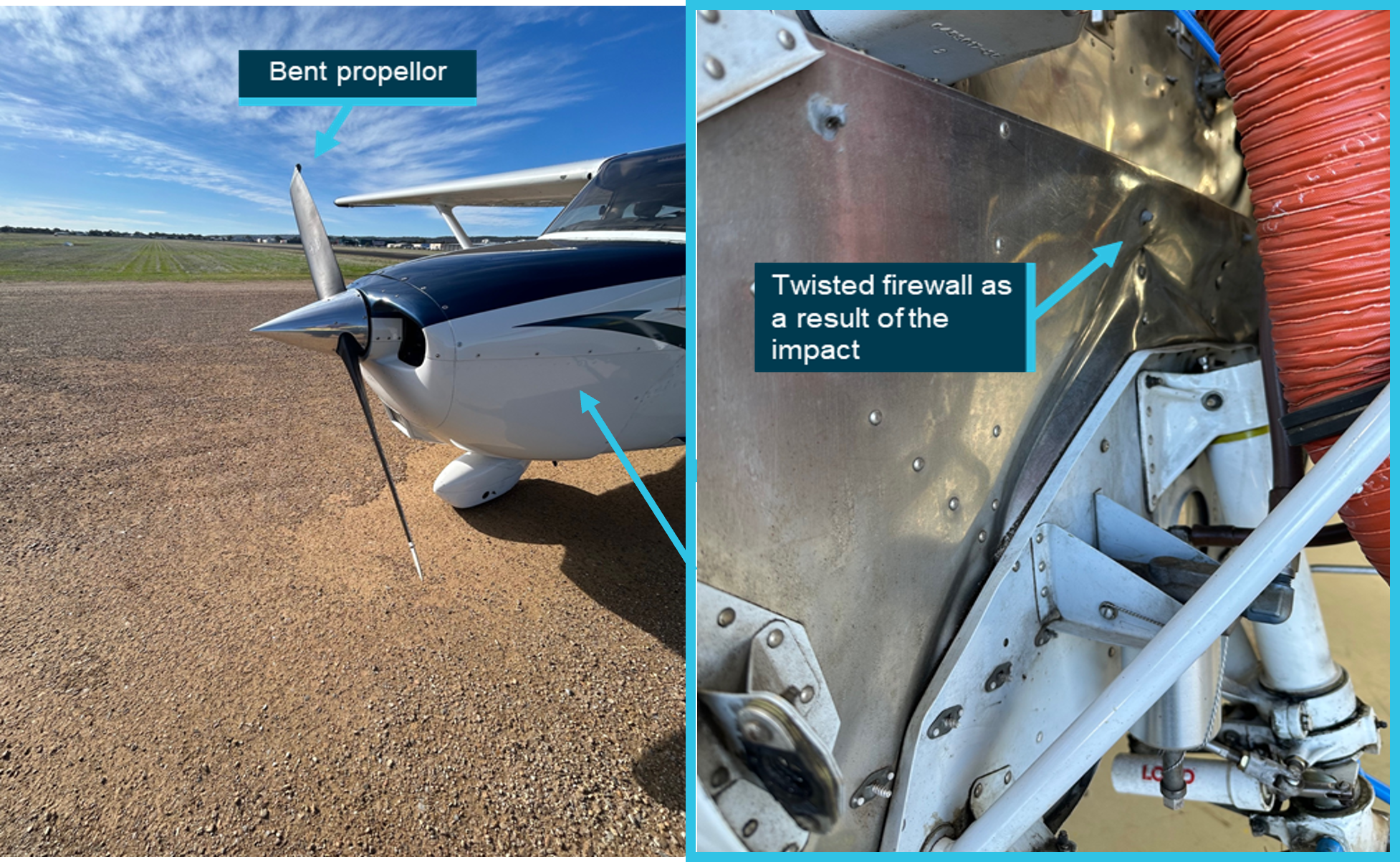What happened
On 3 July 2025 at 1147 local time, a student pilot, the sole occupant of a Cessna 172S, was conducting circuit operations at Parafield Airport, South Australia.
During the seventh touch-and-go of the circuit training, the aircraft encountered a gust of wind as it crossed the runway threshold, resulting in a yaw to the right. In response, the pilot advised that they pushed forward on the control column and overcorrected, resulting in the aircraft landing hard, ballooning[1] and striking the runway a second time. A propellor strike occurred during the second impact with the runway. The aircraft sustained substantial damage to the fuselage and landing gear.
Figure 1: Damage to Aircraft

Source: Operator
Safety message
Wind gusts can be unpredictable. Gusty wind conditions present a challenge for all pilots, but in particular, less experienced student pilots. Maintaining a calm mindset is important in order to adjust the aircraft’s profile and airspeed accordingly and determine that a go‑around is necessary.
The ATSB reminds pilots that as soon as landing conditions become unfavourable, or the approach unstable, initiating a go-around will allow time to reconfigure the aircraft and conduct a safe landing.
About this report
Decisions regarding whether to conduct an investigation, and the scope of an investigation, are based on many factors, including the level of safety benefit likely to be obtained from an investigation. For this occurrence, no investigation has been conducted and the ATSB did not verify the accuracy of the information. A brief description has been written using information supplied in the notification and any follow-up information in order to produce a short summary report, and allow for greater industry awareness of potential safety issues and possible safety actions.
[1] Ballooning occurs when the pilot flares and the aircraft climbs instead of descending onto the runway.


